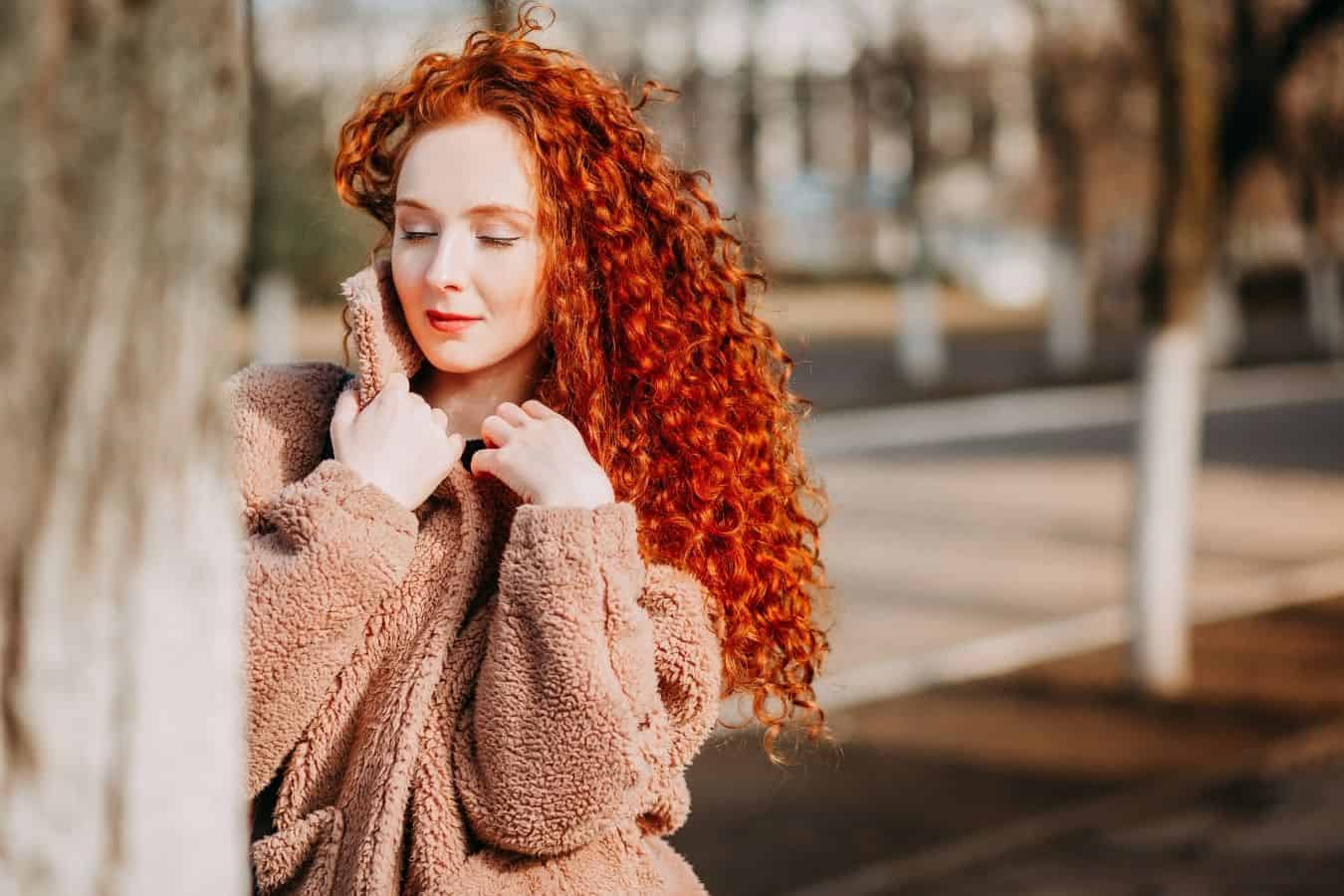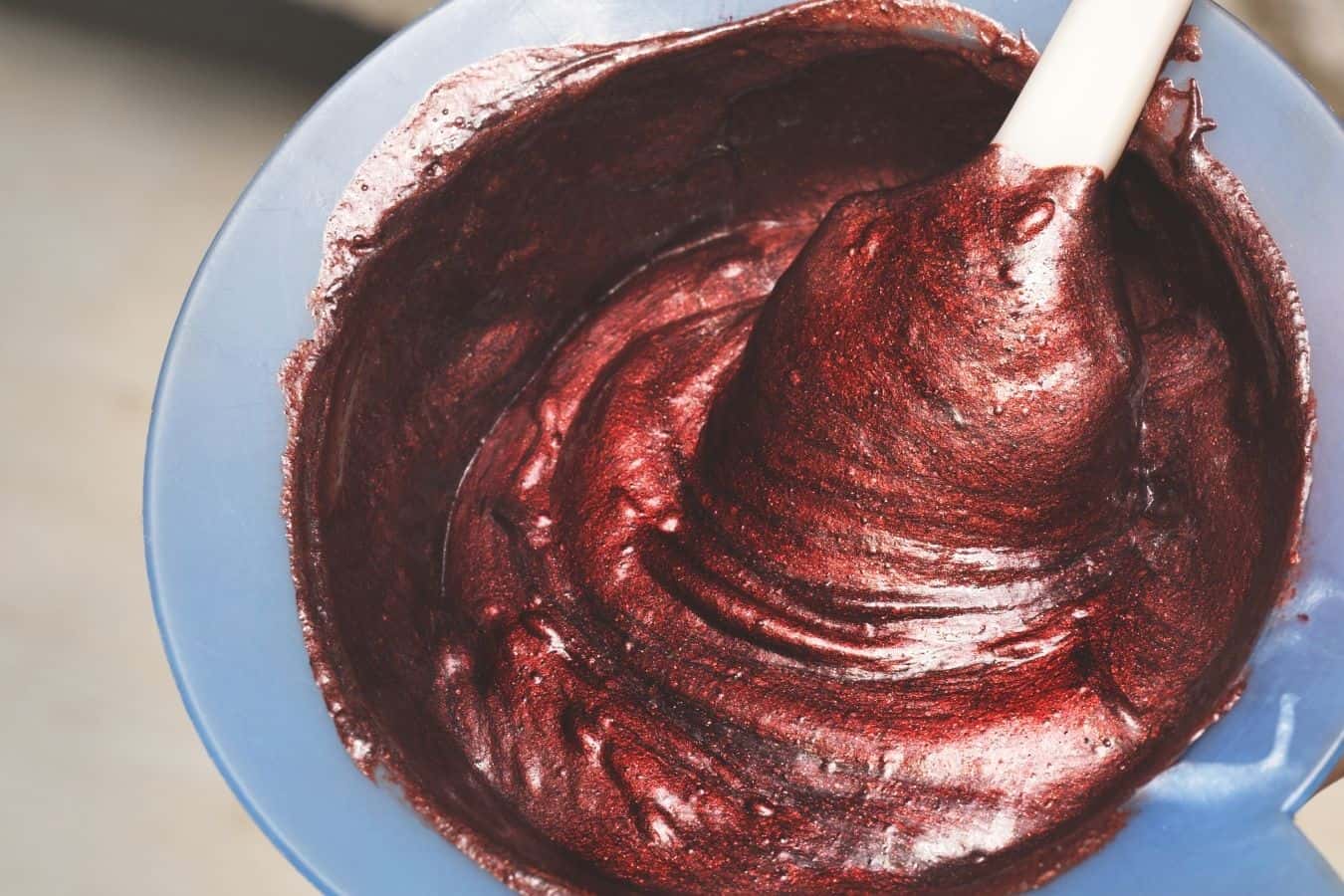If you’re looking to transform your hair by mixing red and brown hair dye, read this handy guide that will help you achieve vibrant color and shine. Create the perfect tone at home with these simple tips and tricks to create long-lasting color.

This post contains affiliate links and we may earn if you click on them (at no extra cost to you). Please read our full disclosure policy here.
Can You Mix Hair Dye Colors?
If you’re looking to create a unique darker hair color perfectly suited to your style, mixing red and brown hair dye is the easiest solution.
In a similar way to diluting hair dye, mixing hair dye offers you the chance to create your own signature shade and the freedom to dictate how dark or light the end result will be.
If you have black or dark hair, you could also choose to color your hair purple as this can be done without bleach. You could also try henna which is a natural but long-lasting hair dye.
It also gives you the ability to determine the level of warmth and vibrancy in the tone you create.
Mixing red and brown hair dye is both safe and highly affordable.
Simply follow the directions on the product packaging and consult our handy guide below to achieve the best results.
It’s important to note however that you will need to postpone dying your hair if you have recently relaxed or permed your locks as this could lead to possible hair breakage and damage.
You should also wait at least a few weeks to dye your hair if you’ve recently had a keratin treatment. This is due to the fact that the color could become uneven.
Why Mix Red and Brown Hair Dye
By mixing red and brown hair dye you can create a custom color to complement your skin tone. For optimum results, it’s best to use permanent red and brown dyes and to choose two dyes from the same brand.
Mixing red and brown hair dye will result in a deep golden brown. It has depth and warmth to it and will elevate your hair.
Brown hair dye contains pigments of three different colors, namely red, yellow, and blue.
As brown hair dye contains red in its original formula, adding red hair dye to the mix will result in a richer shade of brown.
What Shades of Red and Brown to Choose?
Choosing the shade of red and brown hair dye when you’re mixing colors is the most important step. This will determine the final result and ultimately the color of your hair for the next couple of weeks.
The next step is to choose your primary and secondary hair colors. The primary color is the base of your hair color and the shade that will determine the overall look of your hair.
For example, If you enjoy having medium-dark brown as a shade but would like to add a touch of vibrant red, medium-dark brown is your primary color.
Vibrant red is your secondary color as it determines whether your base becomes lighter or darker.
It’s possible to accentuate the warmth or coolness in your primary color simply by mixing with a more natural shade.
Remember that the darkest hair color usually lasts the longest, so choose wisely.
Guidelines For Mixing Red and Brown Hair Dye

Here’s a guide to mixing your red and brown hair dye with a few simple tips to perfecting the process:
1. Choose Your Colors
Decide on your primary and secondary hair color and choose your shades.
2. Use Colors From The Same Brand
Purchase two different boxes of red and brown colors making sure they are from the same brand and are both permanent dyes.
If your hair is past your shoulders in length or is quite coarse in texture, you will need to purchase two boxes of the same shade to achieve the most effective coverage.
3. Use A Color Kit
You will need a plastic bowl or bottle to mix both colors.
We highly recommend this coloring kit from Amazon that includes a bowl, brush, and hair comb that can be re-used and helps to make the entire dying process effortless and fuss-free.
Another great tool to have on hand when coloring your hair at home is a pair of reusable gloves and a salon cape. It’s easy to wash and eco-friendly and will protect your hands from being exposed to the permanent dye.
4. Protect Skin And Surfaces
Put on your gloves before mixing the red and brown hair dye together slowly, ensuring the formula does not come into contact with your clothes or surfaces. Likewise, when washing off the hair dye, make sure there’s no excess hair dye in the shower.
5. Do A Patch Test
Don’t skip the patch test. This step can be a lifesaver for those experimenting with a bold shade. The trick is to color a few hidden hairs first so that if you don’t like the final result it can be styled out of sight.
6. Mix Colors Before Applying To Hair
Using the hair dye brush from your coloring kit mix the two shades properly and then apply the mixture directly onto your hair.
Start at the roots and then apply it to the lower strands. Each hair dye brand slightly differs in developing time so make sure to check the label before rinsing out the mixture.
You can also mix in a bit of conditioner with the hair dye if you’re worried about your hair becoming too dry or better yet, do a pre-color treatment using coconut oil.
7. Rinse With Warm Water
Rinse the hair dye out with warm water and apply the conditioner found in your hair dye box. Make sure you remove all hair dye on your skin as well to avoid irritation.
How to Decide on a Shade
The color of your skin tone is actually one of the most important aspects of choosing the perfect hair shade.
We recommend opting for warm colors for warm skin tones and cool colors for cool skin tones.
When making your final decision about mixing red and brown hair dye, be sure that the end result will complement your skin tone as well as complement the other dye.
Light Skin
Light skin tones are better suited to shades of light red and strawberry blonde. Colors such as bright copper red and true red also work well as they complement lighter complexions.
The color red counteracts the cool tones in pale skin and works to balance out the colors.
Medium Skin
Medium skin tones work well with shades of medium copper-blonde or medium auburn.
If you’re looking to have a dramatic change opt for a bright cherry red or vibrant red.
For those with peachy complexions, you could opt for auburn red as this tends to make the color pop.
Dark Skin
Darker skin tones pair well with shades of medium auburn and chestnut brown shades.
Reddish-brown shades are also ideal and help to add another dimension of color.
Those with olive skin tones also pair well with deep golden browns and rich caramel shades as they help to accentuate the skin’s natural depth.
For Best Results Using At-Home Dyes
Don’t Wash Your Hair Straight After Using Hair Dye
We recommend that you don’t wash your hair for around 24 hours after dyeing your hair so that the color is fully absorbed, and the effects are long-lasting.
Likewise, don’t go swimming immediately after dyeing your hair as chlorine may cause the color to fade.
Use The same Brand
To create the perfect color, it’s best to use the same brand of hair dye for the two colors.
Each brand is different and includes a variety of ingredients.
By mixing red and brown hair dye from contrasting brands it may result in a chemical reaction that could ultimately affect your hair.
Note The Brand And Color Combination
Take note of the brand you chose and the color name and number combination.
This way you can easily replicate the color in future when touching up your roots or if you would like to refresh the color.
If you’re unhappy with the final result having the color combo stored will help you to avoid combining those two shades in the future.
6 Tips and Tricks to Dyeing Your Hair at Home
We reveal some of the best at-home hair color tips and tricks for achieving salon-quality hair:
- Always go a shade lighter for the best results
- Never use a metal bowl to mix the dye as this could react with the chemicals and ruin your mixture. A ceramic or plastic bowl is always best.
- Section your hair. This is the easiest way to avoid patchiness and achieve smooth color throughout your strands
- Add a touch of water to your hair. After your color has developed and before you rinse out the dye, simply sprinkle a tiny bit of water on your hand and move it around the dye. It will help to minimize the risk of streaks or lines and evenly distribute the dye before you rinse it off.
- Wear easy-to-remove clothing. A button shirt or robe is easy to get off without having to remove it over your head. This will eliminate the possible risk of coming in contact with the hair dye when it’s time to rinse your hair.
- Leave your hair down when applying color- although the easier solution is to twist your hair into a bun or knot rather than leave your hair loose. Refrain from the temptation of styling it on the top of your head as you may run the risk of not having evenly distributed color. We recommend leaving your hair down and place an old towel over your shirt or wear an old t-shirt to protect your clothing from interacting with the hair dye.
Disclaimer: This site is not intended to provide and does not constitute medical or professional advice. All of the content on LovedByCurls.com is for informational purposes only. We are not hair care professionals and all advice should be followed at own discretion.
